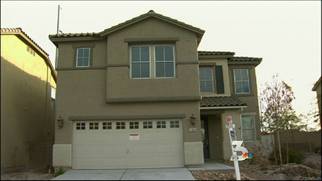Housing Market

Viewing video requires the latest version of Adobe's Flash Player
KSNV coverage of Moody's Analytics report on Las Vegas housing prices, June 22, 2011.
Las Vegas homeowners will have to wait until 2020 to get back half the value of their home lost during the housing collapse and more than 20 years before getting it all back, according to a Pennsylvania research firm.
The struggle of the housing market, in part, is why Moody’s Analytics forecasts the economic recovery will stay slow in Southern Nevada. Nevada will remain in a recession through summer, and it won’t be until 2015 that jobs pared during the downturn will be restored.
“Las Vegas is getting closer to a recovery, but it’s still in recession,” Moody’s Analytics economist Dan White said. “It means things are still getting worse.”
Moody’s removed Mississippi from its list of states in recession in May, making Nevada the last. Among cities, Reno was removed from the recession list this month, and White said Las Vegas probably won’t be taken off until September despite improvements in visitor volume and gaming revenue.
Moody’s bases much of its analysis on employment. Although Las Vegas added 7,400 jobs in leisure and hospitality over a 12-month period, it lost 6,500 jobs in other sectors, White said.
Visitor levels are rebounding, but the gaming industry isn’t coming back as much because although people are spending money, it’s just not at the gaming tables, White said. But the area’s dismal housing market remains the largest “near-term drag” on any recovery, with a large number of foreclosures, and construction at a standstill, he said.
“All of the gains you have made have been outweighed by the losses in the construction and housing markets,” White said.
Moody’s said Las Vegas’ employment went from 927,900 jobs in 2007 to 801,700 in 2010. That number will grow to 827,900 in 2012, 857,800 in 2013, 891,600 in 2014 and 924,000 in 2015.
“You were (over 15 percent unemployment) and by any metric, that was a very deep hole,” White said. “That’s going to be a problem for a number of years. It’s going to take a long time to dig out of that hole. We aren’t going to enter expansion until you gain all of the jobs you had before.”
By its measurement, Moody’s said median existing-home prices in Las Vegas won’t bottom out until 2012 at $122,900, down from $317,100 in 2006, a decline of 61 percent.
Moody’s projects a 6.4 percent increase in price in 2013 to $130,800. In 2014, the price will increase to $147,300 and by 2015, the price will reach $165,200.
That’s a 34 percent increase from 2012 to 2015, but White said the increases should slow after that.
“We expect the bottom in the housing market in the second half of 2012, and once we hit bottom we think it will build up quickly after that,” White said.
That will include the new-home market because construction has been at a standstill and will be until the foreclosure inventory is absorbed, White said. Once that happens, the demand for new homes will pick up quickly, he said.
“By 2013, we will have had six years without any new construction,” White said.
Moody’s projects personal bankruptcies will peak this year at nearly 40,000 but remain elevated through 2015 when they will fall to about 20,000. There were only 4,200 bankruptcies in 2006.
Moody’s projects personal income growth will be 3.8 percent this year, and that will go to 6.1 percent in 2012, 7.8 percent in 2013, 2.9 percent in 2014 and 6.5 percent in 2015.
Through 2015, Moody’s projects Las Vegas’ population will grow by about 133,000 but the net immigration versus emigration will be much lower. It projects a net gain of fewer than 10,000 people this year and that will grow to 25,500 in 2012, 38,200 in 2013, 47,300 in 2014 and 50,900 in 2015.
White said Reno’s recovery has been helped by its attempts to diversify by becoming more of a transportation and warehousing hub to California because of its less expensive real estate.
Las Vegas is well positioned by its gaming industry and ability to attract tourists, but it has a long way to go with its diversification efforts, White said.
It’s not good enough to hope low taxes lure businesses to Southern Nevada, but a highly educated workforce and quality educational system are important to make that happen, he said.
